Rajesh Devraj is the author (with Meren Imchen) of the recently released Sudershan (Chimpanzee), a graphic novel about a simian star in sixties’ Bollywood. In this article, he shares his notes on the real-life counterparts of his fictional character.
I. A CHIMP IN CHENNAI
Zippy the Chimpanzee arrived in India on a hot June day in 1955. No ordinary monkey, he was a bona fide American star who had been imported by S. S. Vasan, the legendary founder of Gemini Studios, to star in his upcoming Hindi film Insaniyat alongside actors Dev Anand and Dilip Kumar. Gemini Studios’ publicity people, who had learned a thing or two from their counterparts in American studios, created a blitz around Zippy’s Indian sojourn. In Mumbai, he was welcomed with a traditional garland by the film’s heroine Mohana, and photographed by the Associated Press, among other journalists. Filmindia ran a picture of Zippy perched on Mohana’s side, along with the kind of suggestive copy that was the magazine’s speciality. “Zippy is a loyal lover”, read the caption. “On arrival at the Santa Cruz airport he kissed Mohana and stuck to her till he departed. That proves that Zippy believes in cushioned comforts. So do many but they are not as fortunate as Zippy…”
Relinquishing Mohana’s ample charms, Zippy next made his way to Chennai, where filming on Vasan’s big-budget movie was already underway. “No film star in recent times received such a tumultuous reception as was accorded to Zippy, the chimpanzee, at the Meenambakkam airport when he arrived with his trainer and owner”, wrote The Hindu’s news editor Rangaswami Parthasarathy in his column. His curiosity had been aroused by the figures of Zippy’s earnings that Gemini’s savvy publicity men had released to the press. These, according to a report in Life the previous month, amounted to around $55,000 from television shows, nightclub engagements, merchandising, and sundry promotions where the talented ape demonstrated his skills at typewriting, roller-skating, finger-painting, and playing the piano. So lucrative was the Zippy enterprise that its owner Lee Ecuyer had multiple chimpanzees on the roster for TV appearances and roadwork . It is therefore not clear whether the Zippy who came to India with his trainer Ralph Quinlan was the same celebrity who had appeared on Howdy Doody and The Ed Sullivan Show, or played the sidekick Cheeta in Tarzan’s Hidden Jungle earlier that year.
Nevertheless, the Chennai press was aware that Zippy was no street juggler’s monkey, but a highly paid talent, deserving of as much attention as Insaniyat’s leads. A consummate showman, Vasan had already pulled off a huge casting coup by signing up two of the Hindi film industry’s biggest stars. But halfway through the shoot, he had decided there was something missing in his movie. It wasn’t surprising that he thought of introducing a performing animal to his rather heavy costume drama: earlier, Vasan’s epic Chandralekha (1948) had featured a canine actor briefly, and he had also used elephants in his Avvaiyar (1953). So when an art director diffidently suggested using a monkey, Vasan promptly seized on the idea. Living up to his reputation as India’s own Cecil B. DeMille, the movie mogul turned his sights west, and struck an overseas deal. Before the month was over, the chimp from Hollywood was on his way to India.
Landing in Chennai on that June day, Zippy was an instant hit with the pressmen and the throngs who had been awaiting his arrival. As a news report in The Hindu noted the next day, ‘the patience of the crowd was amply rewarded when they had the fun of seeing the chimp walk and do things like a boy, and shake hands with all those who wanted to do so. With close fitting dress and boots, Zippy delighted the people by his mannerisms”. The paper’s news editor Parthasarathy was not as impressed. He thought that the American star, “dressed as though he was going to take the field in a football match”, looked bored and oblivious to the tremendous excitement he was causing all around him. Vasan’s team was also considerably underwhelmed. “On first appearance, Zippy was an acute disappointment”, remembered the well-known Tamil writer Ashokamitran, a Gemini employee at the time. “No one knew how big a performing monkey ought to be, but everyone felt Zippy was too small, standing hardly a foot and a half from the ground”. Ashokamitran’s account of Zippy, which appears in his memoir of S. S. Vasan titled My years with Boss at Gemini Studios, goes on to describe the stratagems Gemini technicians devised to compensate for their performer’s shortcomings. Scenes featuring the chimp were shot slightly lower than eye level, so cleverly that the audience never realized that the action on screen was physically impossible for such a small creature.
Notwithstanding the special efforts required for Zippy’s scenes, Vasan changed the tightly worked out script considerably to give his imported talent more screen time. Not for the last time in Indian cinema, the comedy track was extended into a parallel storyline, and Zippy got not one, but two songs with the comedian Agha. He was allowed to mug shamelessly, reducing good dramatic scenes to farce in Ashokamitran’s opinion. While Dev Anand was not allowed to question the director’s wisdom in making him wear a silly moustache, his simian co-star had a lot more leeway. For the month that he stayed in Chennai, Zippy received royal treatment. Lee Ecuyer, in a New York Times interview, recounted people “bowing at our feet as though he really was royalty”. Ashokamitran, who had the responsibility of escorting important visitors around the Gemini lot, observed how the cream of Chennai’s society lined up to meet Zippy. The chimp posed for photographs, “pretending to smoke a cigar big enough to send Samson reeling”, and his crazy pranks were duly advertised in weekly bulletins to an eager public. When the movie was at last released, it was Zippy’s appeal, not the lure of Mumbai’s biggest stars, that packed in the curious crowds. Their verdict was unanimous: the chimp had stolen the film.
Call me a monkey’s nephew: Comedian Agha bonds with Zippy in InsaniyatZippy steals the show in Insaniyat, even as the movie’s stars Dev Anand and Dilip Kumar look on.
II. THE MONKEY AND THE ORGAN-GRINDER
I met Nanabhai Bhatt in 1997, while putting together Toofan TV, a show about Hindi B-movies that aired on Channel [V]. I’d worked out the concept of the show and the initial research, commissioning a fellow B-movie enthusiast, the late Pankaj Advani, to produce and direct the series. Nanabhai, who had been a prolific director of stunt films and mythologicals in the fifties, was one of our first interview subjects. At the shoot, he took over from Pankaj with a veteran’s nonchalance. Calling out to lights, sound and camera to bear witness, he began to narrate the story of his life in a florid, filmi style. Startlingly, it appeared to be the story of Indian cinema itself. Nanabhai had arrived in Mumbai around the same time that sound came to Mumbai’s movies. His brother had been an assistant on India’s first talkie, Alam Ara. He knew who actually directed that film, and who got all the credit. Our eyes popped, and Pankaj let the beta-cam roll on, till the old man himself called “Cut!”.
I am ashamed to say that I remember very little of what Nanabhai said that day. Yes, it’s all on tape somewhere—the lowdown on his career, his film-making family, his son Mahesh Bhatt—but my mind is quite blank on the details. Even more embarrassing, what I do remember from that encounter is not any significant film history, but the picture of a chimpanzee. The photograph, which had pride of place in Nanabhai’s album, showed a slightly manic-looking creature posing for the camera. The old man described the chimp as his favourite actor. Why? Because he never questioned his director’s instructions, that’s why! His name was Pedro. Pedro the Human Chimpanzee, a.k.a. the Ape Bomb.
Allow me now to present some obscure, trivial facts about this performing monkey’s career, and sink further in your esteem. As far as I know, Pedro made his debut in Homi Wadia’s jungle film Zimbo (1958), which was loosely derived from the director’s own Toofani Tarzan, released in 1937. The older film did not feature a chimpanzee: as the producer J. B. H. Wadia later explained, Professor Deval’s Circus had no trained apes, so the role of Tarzan’s loyal companion was offered instead to Boman Shroff, a former stunt hero. Unfazed, Shroff proceeded to play his character ‘Dada’ as a sub-human, semi-simian creature in blackface, a caricature that has been described by one reviewer as “the single most amazingly offensive racial stereotype I’ve ever seen on screen”. As it happens, Toofani Tarzan was not unique in its political incorrectness, and in subsequent years, the jungles of Bollywood were thick with grunting men in gorilla suits, frenziedly scratching their armpits. By the late fifties, however, Homi Wadia must have known that it was time to move on to the real thing. Perhaps Zippy’s reception among Indian audiences was on his mind when he decided to cast an actual chimpanzee in Zimbo.
Pedro’s portrayal of Dada in the 1958 film is naturally an improvement over the original performance, considerably more realistic in tone. With a mysterious ‘Mr and Mrs Joe Neufeld’ as his trainers, he plays it straight for the most part; just the average, loping sidekick from countless jungle movies. As the plot ambles along, however, he comes into his own, donning the heroine’s clothes for a jazzy comedy number, and brandishing a gun manically in the climax. The movie was a hit, and Homi Wadia’s Basant Pictures cashed in with a couple of sequels starring Pedro, as well as dubbed Tamil and Telugu versions. Of all the Zimbo films, it is Nanabhai Bhatt’s Zimbo Comes to Town (1960) that remains the chimpanzee’s finest hour (or two) in Bollywood. In appearance, he is older and bigger, and perhaps less winsome than Zippy—certainly, his presence is a shade darker. Nevertheless, Nanabhai focuses a substantial part of the movie on the chimpanzee’s stunts and comedy routines. Pedro gets to perform all kinds of circus tricks (“such acts that left the audience breath-taken and struck with awe”, according to the film’s promotional booklet). He plays peacemaker in a musical tiff between comic couple Bhagwan and Shammi, and in another song, he’s a lounge lizard with a lolling tongue, going wild with the maracas on a nightclub stage. It’s a wonder anyone took the lead actor Azad seriously after this film, because Nanabhai gives his compliant animal star so many of the hero’s scenes. It is Pedro who rescues the heroine from a gang of kidnappers, Pedro who drives the jeep in a thrilling chase, and bashes up the villain in the end. He even gets a floating head-shot on the poster, wearing a fez, and if you know these things, that’s a symbol of chimp stardom right there.
How popular was Pedro in his time? Based on his rather obscure filmography, it would seem that 1960, the year of the epic Mughal-e-Azam, was also the Year of the Ape Bomb. Several of his starrers are dated 1960, including one named after the star himself: the movie Pedro, which from its synopsis seems to be another one of those run-of-the-mill jungle adventures featuring evil sorcerers, uranium-seeking villains, giant Cyclopean monsters, and yes, an obligatory comedy number with the lyrics “Hello, hello, Mr Pedro”. Bollywood’s hottest jungle star may have swung into southern forests as well during this period, if the Pedro sighted in this Malayalam film is indeed the Ape Bomb himself. Also in 1960, Nanabhai Bhatt churned out his Zimbo movie, as well as another chimp-in-the-city flick, the thriller Police Detective, in which Pedro had a central role, investigating crime and bringing a murderer to justice. The latter film may have been a home production for Nanabhai Bhatt, since his brother Balwant is credited as producer. The Bhatt brothers teamed up again the next year for Teen Ustad (1961), a costume drama in which the titular characters are played by “Mushtaq (Horse), Tiger (Dog) & Pedro (Ape Bomb)”. Following this burst of starring roles, the filmography more or less runs dry, apart from a couple of jungle movies. There’s Tarzan aur Gorilla (1963), where Pedro appears to be playing second fiddle to a man in a gorilla suit, of all things. And then there’s the last of the Zimbo films (Zimbo Finds a Son, 1966), where many of his scenes appear to be spliced together from previously shot footage.
It is tempting to think of Pedro as a Bollywood victim, a minor star who was discarded ruthlessly at the end of a run of exploitation hits. But fanciful speculation aside, what was he truly like, the monkey beyond the arc lights? In a 1984 interview for Star & Style, Homi Wadia’s wife, the legendary stunt actress Fearless Nadia, remembered Pedro as an affectionate if overly excitable companion who would do the craziest things. It was true that he could get violent at times – there had been an incident in which she was attacked and her vision had been temporarily impaired – but in the end, he was a loving soul whose death affected her deeply. In the murky world of performing animals, identity can be a fluid thing. If one Zippy died, or was retired to the Bronx Zoo as he grew older and more aggressive, another cuter one would take his place, and people would be none the wiser. Fourteen chimps played Zippy over the years, but it’s unlikely that there was ever more than one Pedro. “It took me some time to get over his death”, Nadia said.
Pedro in Nagarathil Jimbo, the dubbed Tamil version of Zimbo Comes to Town
Pedro lays down the law for Bhagwan and Shammi in Zimbo Comes to Town
Rajesh Devraj would like to thank Ashokamitran for his help in identifying Zippy’s trainer, and Michael Barnum at the Pedro the Ape Bomb blog for sharing the quotes from Nadia’s interview.
You can read an excerpt from Sudershan (Chimpanzee) here
You can buy the book here
Trackbacks
The Wondrous Histories of Zippy The Chimp and Pedro The Ape Bomb
ArticleJanuary 2013
 By Rajesh Devraj
By Rajesh Devraj
Rajesh Devraj is a writer based in Mumbai. He has worked in advertising, television and film, and is the author of a book on Indian film posters, The Art of Bollywood (2010) and a graphic novel Sudershan Chimpanzee, a collaboration with illustrator Meren Imchen


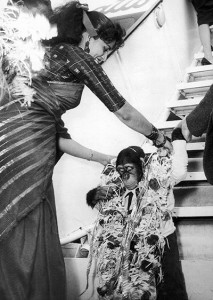
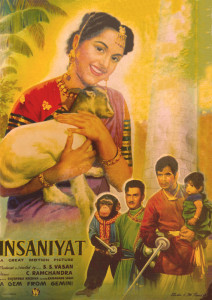
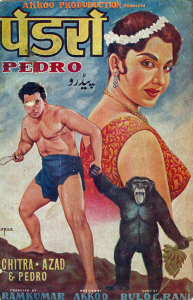
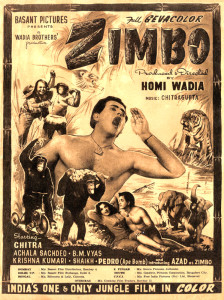
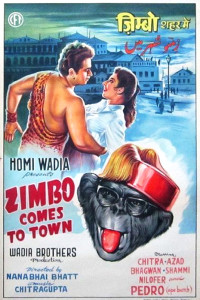
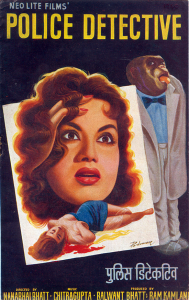
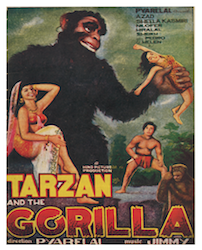
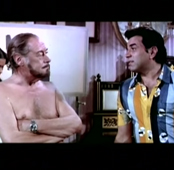

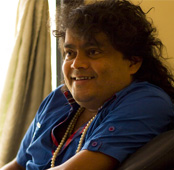

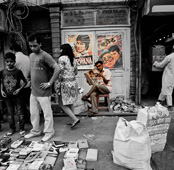

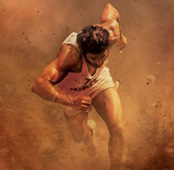
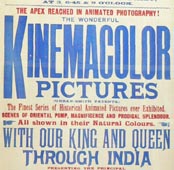
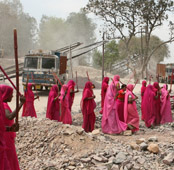
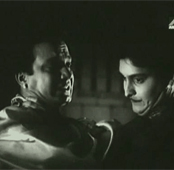

[…] human and fails in the attempt,” says writer, Rajesh Devraj. In an online article featured on thebigindianpicture.com in January 2013, Devraj writes about his experience of an interview with Nanabhai Bhatt whom he […]